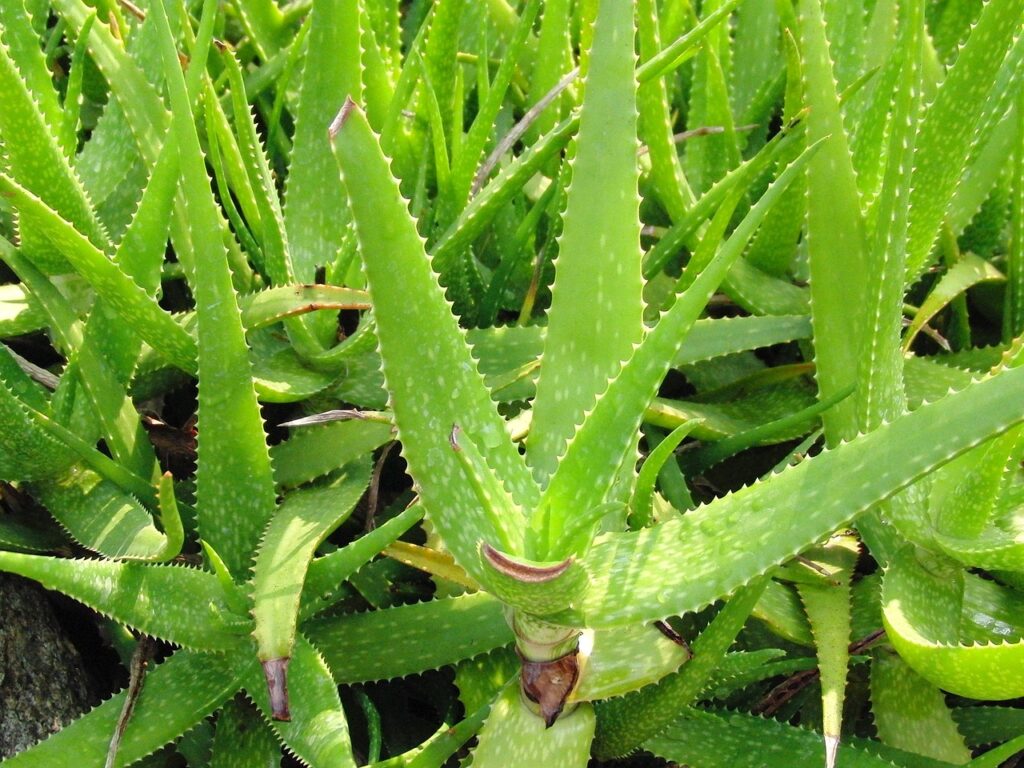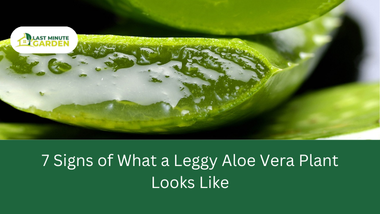Is your aloe vera plant reaching out or standing tall? Find out if your plant’s growth is healthy or if it’s showing signs of legginess.
Aloe vera are popular plants due to their interesting succulent appearance, easy to care for, and their links to health and wellness. They’re famous for their unusual look of growing straight up with brilliant firm stems almost like a snake plant.
You may wonder, what a leggy aloe vera plant looks like. In this blog post, we’ll explore the 7 signs of what a leggy aloe vera plant looks like and how to help it grow.
Signs of a leggy aloe vera

What a leggy aloe vera plant looks like can help you identify the problem at its earlier stage. A healthy aloe vera plant typically has thick, fleshy leaves that grow in a tight rosette, but a leggy one tells a different story. Here are the seven key signs of what a leggy aloe vera plant looks like:
1. Long, Thin Leaves
Aloe grows quickly when in new or insufficient habitats. Often, the most common reason for an Aloe plant to grow upwards like this is when there isn’t enough light for it.
So the plant starts to grow upwards to reach for more light. There are many other reasons why an Aloe plant may start to grow like this, though.
When an Aloe grows quickly in one direction, it is known as a leggy Aloe plant. They may grow straight up, at an angle, or sideways depending on their needs. When this happens, you have a few options on how to handle it.
2. Bending or Drooping Leaves
Another clear indicator of what a leggy aloe vera plant looks like is drooping or bending leaves. Since the plant stretches out to find more light, the leaves lose their strength.
As a result, they start to bend down or droop over the sides of the pot which makes the plant look tired and lifeless.
A healthy aloe should have firm, upright leaves, If your plant is struggling to stand tall, it’s likely reaching for more light, causing a weak, leggy appearance. This can make the entire plant look unbalanced and unstable.
3. Small, Compact Center with Long Outer Leaves
A leggy aloe vera plant often has a small, compact center, but the outer leaves grow long and uneven creating a strange, unbalanced shape where the lower leaves extend far beyond the plant’s base. The uneven growth of a leggy aloe vera pattern can make the plant appear top-heavy with a higher risk of falling over.
The center of the plant, where new growth occurs, remains small because it isn’t getting the light it needs to expand evenly.
4. Pale or Yellowing Leaves
A common question people have is, what a leggy aloe vera plant look like beyond its shape? The answer often includes a change in leaf color.
When aloe vera doesn’t get enough light, the leaves may start to lose their vibrant green hue and turn pale or even yellow which is due to the plant’s inability to produce enough chlorophyll in low-light conditions.
The yellowing is more than just an aesthetic issue, it indicates that the plant is struggling to perform photosynthesis.
5. Spacing Between Leaves
Normally, the leaves of an aloe vera grow tightly together, forming a compact rosette. In a leggy plant, the leaves start to spread out, creating visible gaps between them.
This spacing happens because the plant stretches out to capture more light, leading to a more sparse and open appearance.
How to Help a Leggy Aloe Vera Plant

Now that you know what a leggy aloe vera plant looks like, let’s discuss how to restore it to become healthy. These simple steps can help your aloe regain its natural shape.
1. Increase Sunlight Exposure
Move the leggy aloe vera to a brighter spot. Aloe vera plants need at least 6 hours of sunlight daily. A south-facing window is the best location to provide enough direct sunlight.
If natural light is hard to come by, use a grow light. Position the light about 6-12 inches above the plant to mimic natural sunlight for the aloe vera to regain strength.
2. Repot for Stability
Repot the leggy aloe vera into a slightly larger pot with fresh soil to provide better support for the plant. Choose a heavy pot, such as ceramic or terracotta, to keep the plant anchored.
When repotting, bury the stem slightly deeper to give the plant extra stability to help counteract the top-heavy nature of a leggy aloe vera plant.
3. Trim Damaged Leaf
If your aloe vera is already leggy then even with the changes to its environment, you won’t be able to undo the damage already done. If this is the case then a great option is to trim away the leggy or droopy stems.
Use a pair of sharp clean scissors or knife and make your cut as close to the stem as possible. Once you have taken the cut don’t allow dirt or water to get into the wound and allow the plant to heal itself in the sun.
If you notice the cut area turning black then it’s important you cut this away as it could be the first signs of rot.
4. Adjust Watering Habits
Aloe vera is used to growing in very dry, arid conditions where they have learned to conserve water in their stems.
If you overwater this plant they will take in too much moisture which causes their stems to soften and fall. Two signs of overwatering are wet soil and the stems feeling squishy to the touch.
Instead, make sure you allow the soil to dry out fully between waterings. Try a moisture probe If struggle.
Simply insert the probes in the soil and get a moisture reading. It’s good to wait until the probe reads 1 or 2 before rewatering it to make sure you’re not overwatering your plant.
5. Feed with a Balanced Fertilizer
Provide a balanced fertilizer to give your aloe vera a much-needed nutrient.
Use a succulent fertilizer diluted to half-strength every month during the growing season and avoid using high-nitrogen fertilizers. This will help the plant develop stronger leaves and roots.
Summary
What does a leggy aloe vera plant look like? Asking yourself this question will help you take action before the problem gets worse.
You can make the right changes to restore your aloe vera to its former glory by paying attention to the signs like long, thin leaves and weak stems.
Focus on providing better light, adjusting your watering, trimming damaged leaves, and supporting your plant with the right pot to keep your aloe vera compact and healthy.




